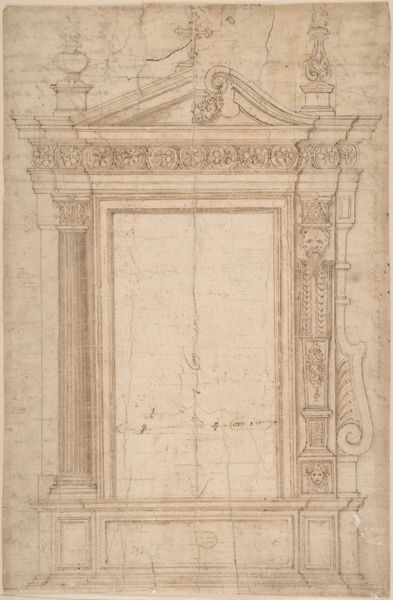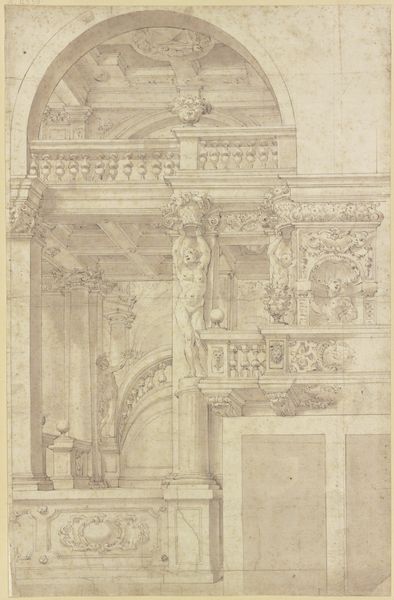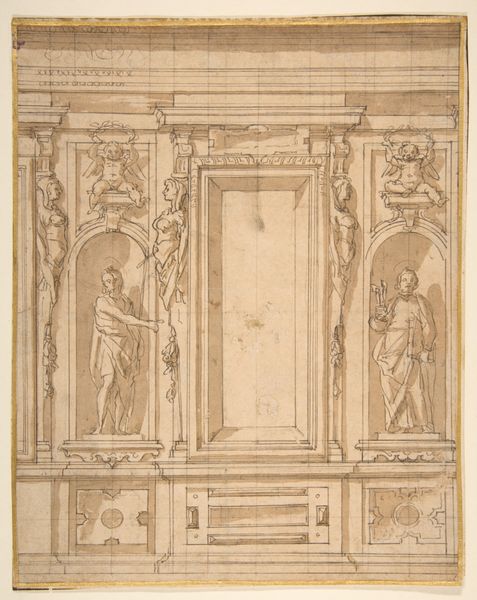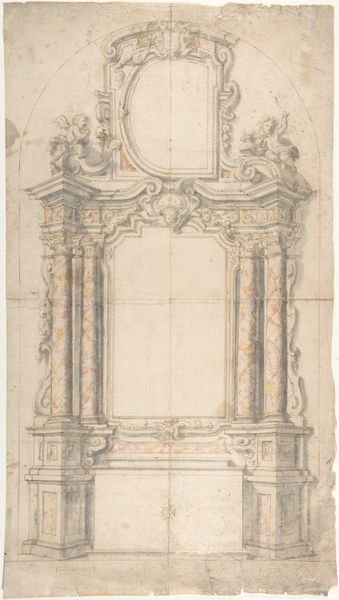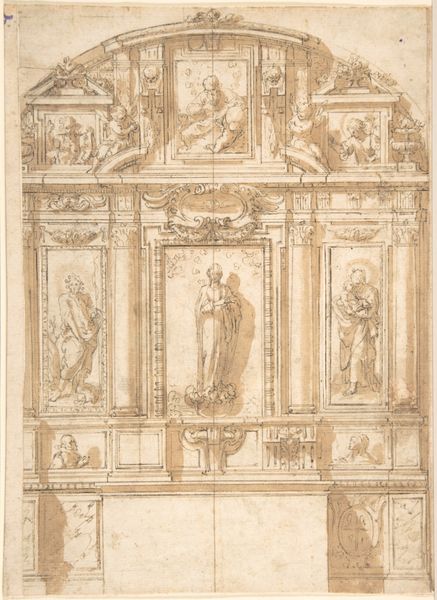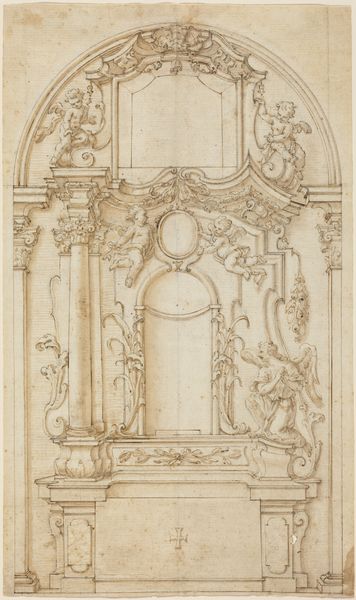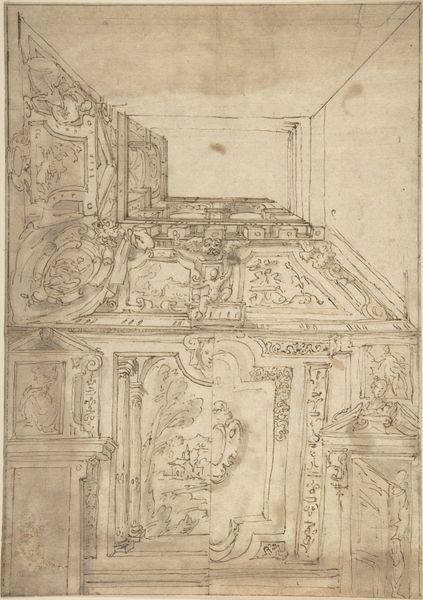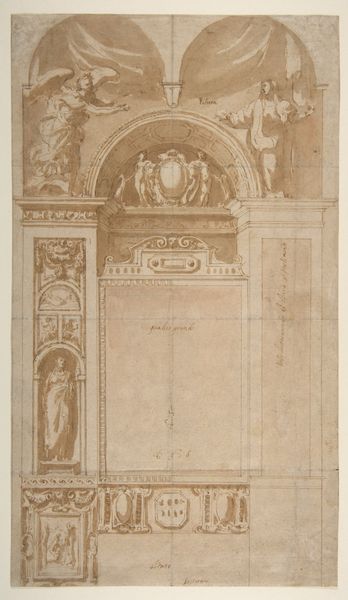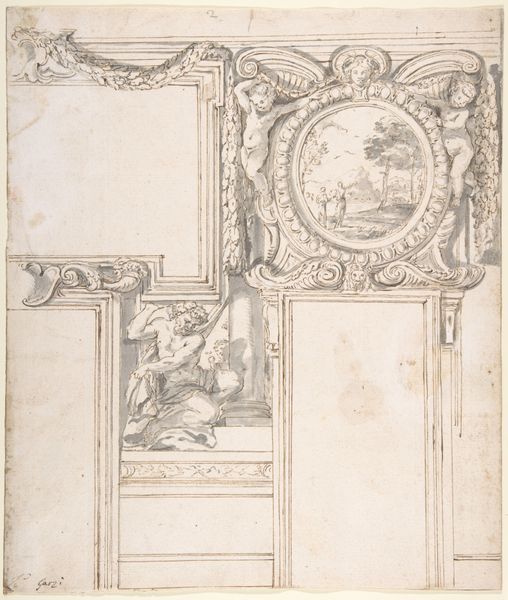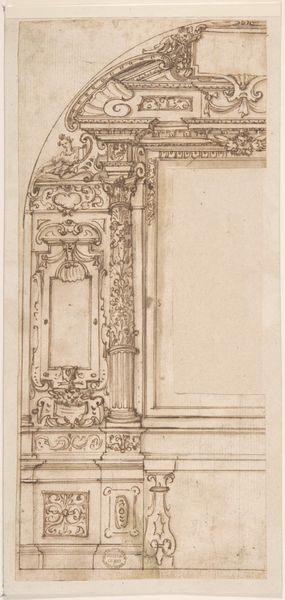
Architectural Design with Two Columns and Figure 17th century
0:00
0:00
drawing, print, paper, pen, architecture
#
portrait
#
drawing
# print
#
paper
#
11_renaissance
#
pen
#
history-painting
#
italian-renaissance
#
architecture
Dimensions: sheet: 9 7/16 x 6 1/16 in. (24 x 15.4 cm)
Copyright: Public Domain
Editor: This is an intriguing architectural drawing, titled "Architectural Design with Two Columns and Figure," dating back to the 17th century and held at the Metropolitan Museum of Art. It's done in pen and ink on paper, and it gives me a somewhat austere, almost ghostly feeling. What do you see in this piece, looking at it through a cultural lens? Curator: It’s more than just a design; it's a statement about power, representation, and perhaps even the subjugation of the individual. Look at the way the architectural structure dwarfs the figure. The imposing columns and elaborate details scream authority, a very common visual strategy throughout history used to portray power. It suggests a system that’s built to impress and dominate. Consider where such structures were typically erected and whom they served to exclude. How might this connect to societal structures and historical imbalances of power? Editor: So you're saying that the architecture isn't just background, but actively participating in some kind of symbolic narrative about authority? Curator: Precisely. Architectural drawings from this era served as tools for visualizing social hierarchies and projecting ideologies. These aren't merely aesthetic choices; they're visual assertions of dominance. Look closer, is the figure clear and assertive? It almost vanishes into the architecture that surrounds it. Is this a statement of the period around the significance of humanism, where individuals had more self determination, or is it a more complex comment about its failures to establish a space for all in society? Editor: That's fascinating, I hadn't considered how the power dynamics could be encoded right into the structure itself, as opposed to simply being represented in paintings or sculptures *within* the space. Curator: Exactly. Thinking intersectionally, we need to consider the identity, class, race and gender of who the architectural design, and indeed this sketch was for. Architectural history must be linked to societal context, otherwise it's just pretty shapes and spaces, devoid of people's true relationship with place. Editor: That perspective really adds depth. I see so much more here now than just an old drawing. Thanks for helping me to see this from a cultural studies angle! Curator: And thank you. Analyzing visual cues with intersectional ideas gives artworks continued significance, sparking dialogue between historical analysis and contemporary societal discourse.
Comments
No comments
Be the first to comment and join the conversation on the ultimate creative platform.
